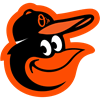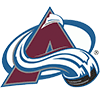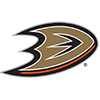Grouping players by tiers is a popular bookkeeping procedure. Most often, the delineation is based on quality. That is, one tier ends and the next begins when there's a perceived drop in fantasy potential. There's nothing wrong with this approach. Many have used it with good success, including yours truly.
Last week, I serendipitously stumbled upon an alternate tiering process and applied it to relievers. Then I had an epiphany – this will work for all positions!
To review, the method isn't really tiering; it's more grouping. The inventory is grouped by a common trait, and then roughly ranked within each group.
The best part is the groups are entirely subjective, based on the manner the individual perceives that player pool. You may take the same 40 relievers and order them differently within a group, place someone in a different group or even come up with a completely different set of groups and not use ones that I listed.
The idea is to get away from drafting a static projection and focus on roster construction. In other words, you're emphasizing something about each player beyond their mean projection. By means of example, here are the starting pitcher classifications I'll present in a bit, with a brief description.
- Ace – Elite skills, solid track record of success, no obvious injury concern
- Potential Ace – Elite or the potential for elite skills without an extended track record
- Solid – The primary trait is durability, but elevated skills with some level of risk
Grouping players by tiers is a popular bookkeeping procedure. Most often, the delineation is based on quality. That is, one tier ends and the next begins when there's a perceived drop in fantasy potential. There's nothing wrong with this approach. Many have used it with good success, including yours truly.
Last week, I serendipitously stumbled upon an alternate tiering process and applied it to relievers. Then I had an epiphany – this will work for all positions!
To review, the method isn't really tiering; it's more grouping. The inventory is grouped by a common trait, and then roughly ranked within each group.
The best part is the groups are entirely subjective, based on the manner the individual perceives that player pool. You may take the same 40 relievers and order them differently within a group, place someone in a different group or even come up with a completely different set of groups and not use ones that I listed.
The idea is to get away from drafting a static projection and focus on roster construction. In other words, you're emphasizing something about each player beyond their mean projection. By means of example, here are the starting pitcher classifications I'll present in a bit, with a brief description.
- Ace – Elite skills, solid track record of success, no obvious injury concern
- Potential Ace – Elite or the potential for elite skills without an extended track record
- Solid – The primary trait is durability, but elevated skills with some level of risk can be included
- Over 30 with Risk – The risk can be health, or simply aging
- Under 30 Injury Risk – Could be injury prone or coming off an injury
- Strikeouts are Fascist – Track record of success without a dominant strikeout rate
- Nuke Laloosh – What can I say, I'm a Bull Durham fan. Pitchers with a strong skill set but with poor control
- Shiny New Toy – Young pitchers with prospect pedigree, some with major-league experience
- Missouri – The Show Me state, I liked what I saw last season, now do it again
- Rebound Candidates – Could be due regression or a one-year blip, and revert to previous levels
- End Game – Don't fit another classification but willing to take a late flier
It's important to understand that other than Ace and End Game, there isn't a hierarchy among the groups. The idea is every player adds something other than potential stats to your team. Some add risk, others stability. Some are more favorable or less desirable to your team construction.
Chris Archer is the impetus for this process. For years, Archer would be ranked high, but those generating the lists always seemed to pass over Archer when they "should have" drafted him. If you're going to publish – or sell – rankings and not adhere to them within reason, there's something wrong with the list.
I suspect Zack Greinke will be "2021's Chris Archer". Those using a touch-and-feel ranking process will simply rank Greinke lower. Those using an objective approach based on projections will have Greinke listed higher, even after applying aging factors. They'll continue to pass on Greinke even though he's on top of the available pitcher list for several rounds.
The elegance of this system is I'm classifying Greinke as Over 30 with Risk. He could be at the top of the group, but if my team construction can't support a risky pitcher, it's viable to look elsewhere, even if his projection in a vacuum is better than those in other classifications.
Here's a practical example. It's safe to say Jacob deGrom, Gerrit Cole and Shane Bieber will be the first three arms drafted in some order. Below are the next 10 according to the current NFBC ADP. I'm grouping them by my classification, not by projection.
Over 30 with Risk: Max Scherzer, Clayton Kershaw
Potential Ace: Trevor Bauer, Yu Darvish, Walker Buehler, Luis Castillo, Jack Flaherty
Solid: Lucas Giolito, Aaron Nola, Zac Gallen
Now the decision isn't, "I want a pitcher and so-and-so is on top of my list." If Darvish and Bauer have been drafted, you might decide between a risky former ace in Scherzer and a future ace with possible workload limitation in Buehler or Flaherty. Your approach can even involve reading the market and preferring to start with someone in the Solid group who will be available with a later pick. The relative ranking based on projections is no longer directing the pick, which is the key to competitive team construction.
With that as a backdrop, here are 120 starting pitchers distributed within the 11 groups described above. There's too many names to comment on each, but I'll be happy to thumbnail anyone in the comments, even if they aren't mentioned. I'm also happy to explain/justify placement within a group. There are multiple instances where an individual could have been placed in another group but I chose the one I consider most pertinent to my typical roster construction.
Ace
While I won't dispute the group could be expanded with other names, track record is important to me and no one else has the sustained level of excellence of deGrom and Cole.
Potential Ace
| Shane Bieber |
| Yu Darvish |
| Trevor Bauer |
| Walker Buehler |
| Jack Flaherty |
| Luis Castillo |
| Brandon Woodruff |
| Blake Snell |
| Corbin Burnes |
| Chris Paddack |
| Jesus Luzardo |
| Framber Valdez |
| Sean Manaea |
| Frankie Montas |
The order within this group is how I rank them. Extending down to those in the lower end is part of reading the room and game theory. Maybe I don't want to expend the draft capital necessary to select Bieber, Bauer or Darvish, but I'd still like a potential ace on my staff. I could wait a little for Castillo or Woodruff or longer and grab Burnes, Luzardo or Montas (as examples).
Manaea is a reflection of my continued belief his skills still have a chance to come together in an elite or close to elite fashion. Remember, the group in which the player resides is subjective and putting him here is a self-reminder to leave a spot for him on my staff.
Solid
| Aaron Nola |
| Lucas Giolito |
| Kenta Maeda |
| Zac Gallen |
| Jose Berrios |
| Lance Lynn |
| Hyun Jin Ryu |
| Dylan Bundy |
| Sonny Gray |
| Carlos Carrasco |
| Max Fried |
| Zack Wheeler |
| Joe Musgrove |
| Chris Bassitt |
| Kevin Gausman |
| German Marquez |
The main requirement of solid is low injury risk, hence a hefty volume of innings. The other factor is not fitting into any of the other groups. Anyone following my work likely knows I have my mail delivered to this group; this is where I prefer to live.
Over 30 with Risk
No doubt there are some difference makers on this list. The trick is guessing correctly which ones it will be, along with building a foundation able to buffer an ill-advised selection. Having the names grouped in this manner also aids in determining a general strategy. If you embrace risk and want multiple pitchers from this group, you can use ADP and plan a roadmap around them. If you want some, but not too much, risk, you can draft one from the group.
Under 30 Injury Risk
| Dinelson Lamet |
| Lance McCullers |
| Andrew Heaney |
| Griffin Canning |
| Eduardo Rodriguez |
| Luis Severino |
| Noah Syndergaard |
| A.J. Puk |
| Michael Kopech |
| Jameson Taillon |
Probably more so than the older injury risks, spring training matters for many of these names. It's caveat emptor for early drafters, especially in draft-and-hold formats where you can't replace someone who has a setback or underperforms.
Strikeouts are Fascist
| Kyle Hendricks |
| Julio Urias |
| Marco Gonzales |
| Ryan Yarbrough |
| Pablo Lopez |
| Marcus Stroman |
| Miles Mikolas |
| Dallas Keuchel |
| Mike Soroka |
| Kwang Hyun Kim |
| Randy Dobnak |
| Brady Singer |
| Zach Davies |
| Brad Keller |
| John Means |
There's two ways to look at this group: they are helpful to ratios but detrimental to strikeouts, or their low strikeouts leaves little margin of error and the potential for bloated ratios. Everyone doesn't have to be one or the other. Hendricks has a long track record of success with minimal punchouts, while Gonzales has done it for the past couple of seasons. As such, maybe pairing a perceived safer Hendricks with a risky high strikeout option are symbiotic pieces to the roster puzzle. There is nothing groundbreaking about pairings of this nature, but the described classifications help visualize the different combinations.
Nuke Laloosh
I wavered on where to place Glasnow, as he hits in a couple other groups, but my main reaction when I see his name is, "If he can maintain control gains, he's a stud." Durability is also a concern, but I can factor that in when making a decision.
Shiny New Toy
| Sixto Sanchez |
| Triston McKenzie |
| Dustin May |
| Tarik Skubal |
| Nate Pearson |
| Spencer Howard |
| Dane Dunning |
| MacKenzie Gore |
| Clarke Schmidt |
| Matt Manning |
| Deivi Garcia |
| Mitch Keller |
| Casey Mize |
| Tanner Houck |
| Luis Patino |
Again, some of these youngsters can be placed elsewhere, but my overriding thought is, "They're still young." Sanchez could be in the low strikeout group, but he's young and could learn to miss more bats. Mize needs to improve his control, but he's young. For what it's worth, the order within this classification is arbitrary and loosely based on projected innings, which is a total guess at this point.
Missouri
| Zach Plesac |
| Zach Eflin |
| Tony Gonsolin |
| Elieser Hernandez |
| Caleb Smith |
| Aaron Civale |
| Sandy Alcantara |
| Jose Urquidy |
| Merrill Kelly |
This is an intriguing set. In general, they either outpitched their peripherals or exhibited large skills improvement and need to prove it's sustainable. This group is often "overdrafted" by those focusing on surface stats and not underlying metrics. If I generated this list a few years ago, it would have included Nick Pivetta and Zack Godley. On the other hand, Zac Gallen would also have found a home here.
Rebound Candidates
| Patrick Corbin |
| Mike Minor |
| Josh Lindblom |
| Matthew Boyd |
| Adrian Houser |
| Carlos Martinez |
| Jordan Montgomery |
| Madison Bumgarner |
| Mike Foltynewicz |
This is essentially the opposite of the Missouri list, as these hurlers posted disappointing seasons. The reason could be an artifact of the 60-game season, bad luck or actual declining skills. For example, I'm not interested in Corbin or Bumgarner but am intrigued by Minor, Lindblom and Houser.
End Game
Everyone will have their own names for this list. For me, they're mostly guys I've been high on in the past and am obstinately holding onto.
There you have it, an alternate means of approaching starting pitching. It's far from revolutionary, but it's unique, at least to me.
Again, please feel free to hit me up with comments/questions/criticisms in the discussion section below.
NEXT WEEK: Catchers




























